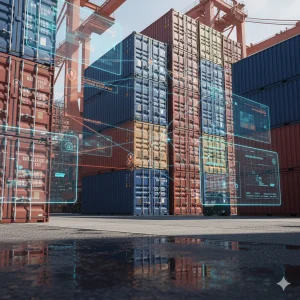
Investment platforms have gone through a major transformation. Whether it’s robo-advisors, retail brokerage apps, crypto exchanges, or wealth management portals, most platforms today don’t operate in isolation.
They integrate with a wide network of third parties: custodians, fund managers, KYC vendors, data providers, payment processors, and liquidity partners.
But every connection creates exposure. If one of these third parties fails to meet regulatory expectations—or worse, is involved in fraudulent activity—the reputational and compliance fallout hits the platform first.
In 2025, third-party risk isn’t just operational—it’s regulatory, reputational, and existential. That’s why investment platforms need to rethink how they assess, monitor, and manage risk across their partner ecosystem.
Third Parties Expand Your Risk Perimeter
Every partner you onboard extends your compliance boundary.
- A data feed that misclassifies risk.
- A fund partner is exposed to sanctions.
- A payments partner that bypasses AML protocols.
These aren’t hypothetical scenarios—they’re active risks. Regulators around the world, from the SEC to the FCA to ESMA, are placing increased responsibility on platform operators to “know their partners” and ensure end-to-end compliance.
This shift requires platforms to adopt a new posture: treat every third party as a potential risk vector, not just a service provider.
The Complex Web of Dependencies
Investment platforms rely on dozens of third parties, sometimes even hundreds, across jurisdictions. These include:
- Custody and clearing houses
- Cross-border remittance or payment rails
- Aggregated market data feeds
- Tax and regulatory reporting APIs
- White-labeled investment products
Each integration brings legal, financial, operational, and compliance risk. And these risks are compounded when:
- Partners rely on their subcontractors (creating 4th- and 5th-party dependencies)
- Oversight is limited to annual reviews or static SLAs
- Risk profiles are assumed, not actively monitored
In short, what seems like a seamless experience on the front end may be a fragile compliance ecosystem behind the scenes.
Regulatory Scrutiny Is Rising
Third-party governance has moved from back-office policy to front-page regulation.
Regulators are holding platforms responsible for failures anywhere in their partner chain, especially in finance. This includes:
- Sanctions violations due to intermediaries
- Data breaches through unvetted vendors
- Fraudulent products or schemes offered via external partners
- Misaligned risk disclosures or performance claims
In regions like the EU and UK, operational resilience regulations now require platforms to identify and manage critical third parties and demonstrate how risks are assessed, documented, and escalated.
This is no longer a checkbox. It’s an expectation.
Traditional Risk Reviews Are Too Slow
Most platforms conduct initial due diligence during onboarding and maybe an annual review after that. But third-party risk isn’t static.
Risk can spike overnight due to:
- A negative news event
- A regulatory investigation
- A change in ownership or control
- A breach involving subcontractors
Waiting a year to uncover these risks is a gamble platforms can’t afford.
Instead, continuous monitoring is emerging as the new standard, providing real-time alerts when third-party profiles shift.
What Modern Risk Management Looks Like
To stay ahead, investment platforms need more than vendor checklists—they need intelligent infrastructure.
That includes:
- Pre-onboarding risk profiling using KYB, ownership, and jurisdictional data
- Real-time sanctions and media monitoring across partners
- Behavioral risk signals (e.g., abnormal volume spikes or payout routing)
- Risk-tiering logic that adjusts oversight frequency based on exposure
- Audit-ready workflows with traceable decision paths
This integrated model turns third-party risk from a black box into a manageable framework—scalable, explainable, and responsive to change.
How IDYC360 Helps Investment Platforms
IDYC360 empowers investment platforms to gain visibility and control over every partner and integration, without slowing down operations.
Here’s how we do it:
Global KYB and UBO Resolution
Instantly verify third-party entities across jurisdictions, including beneficial ownership, registration status, and blacklist exposure.
Continuous Sanctions & Media Screening
Real-time monitoring of all third-party partners against global sanctions lists and negative news sources—automatically linked to platform workflows.
Third-Party Risk Tiering Engine
Classify partners based on risk level, geographic exposure, and service criticality, customizable to your regulatory obligations.
Dynamic Monitoring Triggers
Flag profile changes, high-risk associations, or alerts tied to subcontractor relationships and downstream exposure.
Audit-Ready Trails
Every third-party interaction, alert, and resolution is logged, timestamped, and stored for regulator-ready reporting.
Seamless Workflow Integration
Embed third-party risk checks directly into onboarding, partner ops, and legal review workflows—via API or dashboard.
With IDYC360, investment platforms get more than compliance—they get confidence in every partnership.
Final Thoughts
Investment platforms are only as strong as the ecosystem they connect to. Every third party—no matter how trusted—brings risk that must be understood, monitored, and managed.
In 2025, regulatory expectations are clear: you’re responsible for the company you keep.
Platforms that embrace this reality—and invest in intelligent, proactive third-party governance—will protect more than compliance. They’ll protect their brand, their users, and their future.
Ready to Stay
Compliant—Without Slowing Down?
Move at crypto speed without losing sight of your regulatory obligations.
With IDYC360, you can scale securely, onboard instantly, and monitor risk in real time—without the friction.










